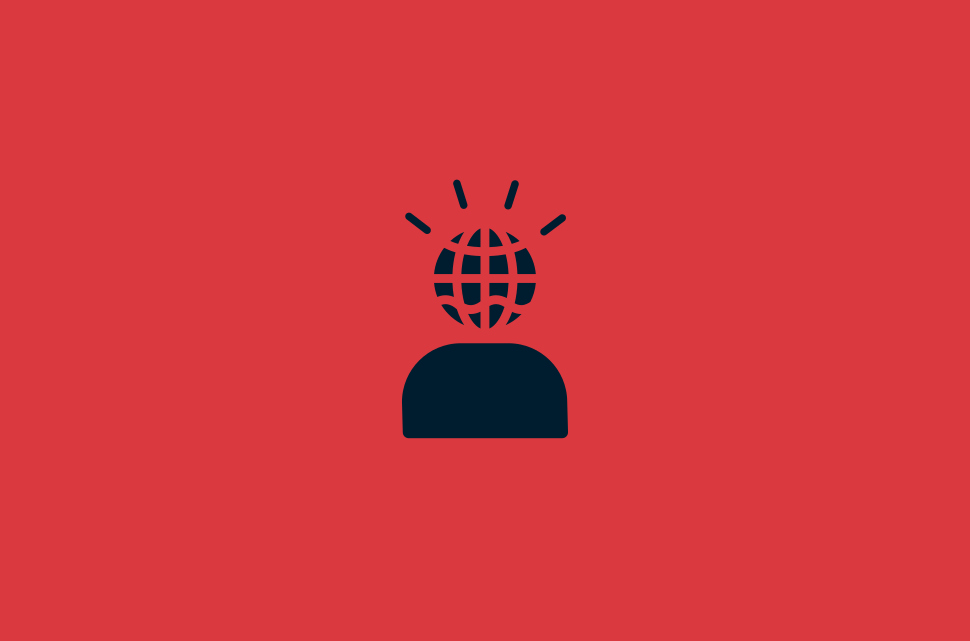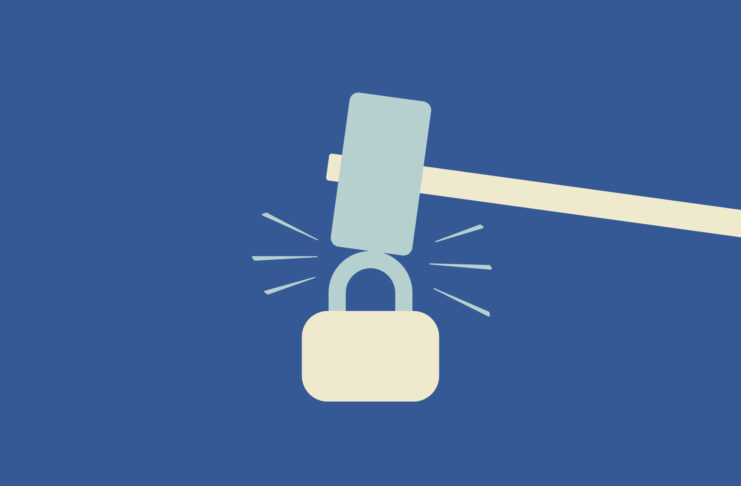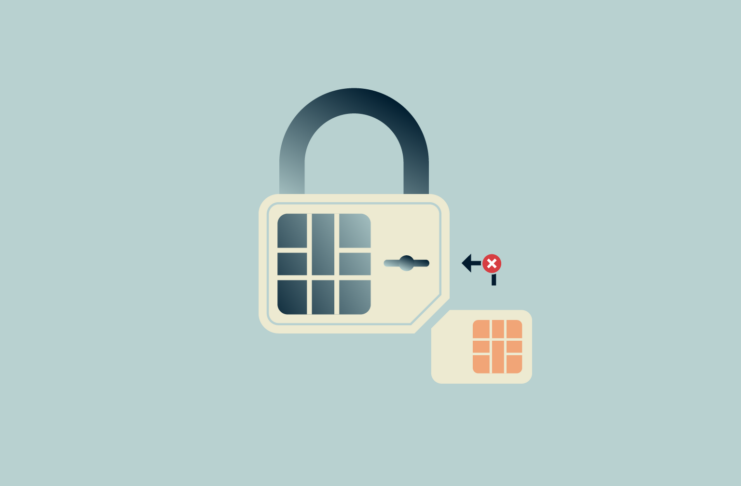Picture this: You’re in the middle of a video call, streaming your favorite show, or trying to download a large file, and you’re left wondering, “Why is my internet so slow?” Slow internet can turn even the simplest tasks into a headache, especially when you’re paying for high-speed service.
The good news? Most slow Wi-Fi issues are easy to fix once you know what’s causing them. In this guide, we’ll unpack the most common reasons for sluggish connections and show you how to get your internet back up to speed—fast.
What does “slow Wi-Fi” really mean?
When your Wi-Fi feels sluggish, it’s easy to blame your internet provider or your router. But what does “slow Wi-Fi” actually mean? Understanding this is the first step to figuring out what’s slowing things down and how to fix it.
Defining slow Wi-Fi: Speed vs. latency
To figure out why your Wi-Fi feels slow, you need to understand two important factors: speed and latency. They’re the key players in how well your internet performs.
Speed refers to how quickly data can be downloaded or uploaded over your internet connection. It’s measured in megabits per second (Mbps) and determines how fast activities like streaming videos, downloading files, or loading web pages happen. If you’re experiencing slow download speeds or buffering, these issues are often caused by limited bandwidth or a poor connection.
Unlike speed, latency is about responsiveness. It’s the time it takes for data to travel from your device to a server and back, measured in milliseconds (ms). High latency, sometimes called “ping,” can cause noticeable delays, even if your internet speed is high. It can make real-time activities like gaming or video conferencing frustratingly slow.
In short, speed determines how fast data moves, while latency measures how quickly you get a response. Both are essential for a smooth internet experience, as issues with either can slow your Wi-Fi.
Wi-Fi vs. wired connection
One big factor that impacts your internet speed is how you’re connected. Are you using Wi-Fi, or is your device plugged in with an Ethernet cable?
Wi-Fi is incredibly convenient, allowing you to connect multiple devices without messy cables. However, if you’ve been wondering why your Wi-Fi is slow, it might be due to interference from walls, furniture, or even household appliances, especially if you’re far from the router.
A wired connection, typically through an Ethernet cable, offers more stability and faster speeds than Wi-Fi. However, it comes with the drawback of less mobility. The good thing is that a wired connection is less susceptible to interference, making it ideal for bandwidth-heavy activities like gaming, streaming in 4K, or video conferencing. The trade-off? You’ll lose the flexibility of moving around, as it requires your device to stay plugged in.
For the best of both worlds, use a wired connection for devices that need consistent speed and reliability, and Wi-Fi for everything else.
What is bandwidth, and how does it affect speed?
Bandwidth is the maximum amount of data your internet connection can handle at any moment, measured in Mbps. More bandwidth means more data can flow simultaneously, which is helpful for households with multiple devices. Think of it as a highway: The wider the road, the more cars (or data) can travel smoothly.
Bandwidth impacts how quickly you can stream videos, download files, or browse the web. For example, streaming a movie in HD uses significant bandwidth. If someone is gaming or on a video call simultaneously, you may experience buffering. If you’re wondering, “why is my internet so slow,” limited bandwidth shared among many devices might be the reason.
Too many devices using your connection can dramatically drop speed, leading to frustrations like slow internet or poor quality. Additionally, some internet service providers (ISPs) may throttle your bandwidth during peak hours, affecting internet performance.
Top reasons: Why is my Wi-Fi so slow?
If your Wi-Fi feels like it’s stuck in slow motion, you’re not alone. There are many reasons your internet might be underperforming, but the good news is most of them are fixable. Let’s break down the most common culprits so you can figure out what’s holding your connection back and take steps to fix it.
1. Too many devices connected simultaneously
With so many smart devices in our homes today, your Wi-Fi might be juggling more gadgets than it can handle. Smartphones, laptops, smart TVs, gaming consoles, and smart devices, like speakers, compete for the same bandwidth. The more devices connected, the less bandwidth there is for each one, leading to frustratingly slow internet.
2. Wi-Fi interference from other devices
Do you know that everyday household items like microwaves, baby monitors, and cordless phones can interfere with your Wi-Fi signal? These devices operate on similar frequencies as your router, creating signal interference that can lead to poor internet connection and high ping.
3. Outdated router, modem, or firmware
An outdated router or modem can seriously affect your internet speed and reliability. Older equipment may not only be unable to support your ISP’s maximum speeds but also struggle to manage the number of devices in your household. If you notice a significant drop in your internet connection the farther you move from your modem router, it could indicate the need for an upgrade. Additionally, it’s important to remember that both the hardware and firmware may require updates for better performance.
4. ISP throttling: What it is and why it happens
ISP throttling happens when your internet provider intentionally slows your connection, often due to data cap restrictions or high usage during peak hours.
A great way to tell if you’re being throttled is to conduct a speed test with and without a VPN. A VPN, like ExpressVPN, gives you a new IP address and prevents your ISP from throttling you. If your internet speed increases while connected, it’s almost certain that your ISP is throttling your traffic.
ExpressVPN does more than just prevent your ISP from throttling your connection. It also encrypts your internet traffic and hides your IP address, ensuring your online activity stays private and secure—away from the watchful eyes of ISPs, advertisers, and cybercriminals.
5. Network congestion during peak hours
In the evenings and on weekends, when everyone’s online, network congestion can slow your connection to a crawl. This is like rush hour traffic on a highway—more users mean slower speeds for everyone. Try using your internet at off-peak times or upgrading to a higher-speed plan that’s better equipped to handle heavy usage.
6. Poor router placement and weak signal strength
Where you place your router can make or break your internet performance. Walls, furniture, and floors can weaken Wi-Fi signals, leading to spotty connections and slower speeds. If you’ve noticed weak Wi-Fi signals in certain areas, a slow Wi-Fi could be why.
7. Malware of viruses consuming bandwidth
Malware, spyware, and viruses can put privacy at risk and they can also hog your bandwidth and drag your connection down. These malicious programs often run in the background, secretly sending or receiving data without your knowledge. This can lead to noticeable slowdowns, especially if the malware is part of a botnet or actively mining cryptocurrency.
8. Background applications draining your connection
Resource-heavy applications and programs may be eating up your bandwidth. These can include, but are not limited to: Software updaters, game launchers, webcams for streaming, or smart speakers playing music in the background.
9. Data cap restrictions
Depending on your data plan with your ISP or mobile carrier, you may have exceeded your monthly data allowance. While many providers have unlimited data plans at a set price, some will set a maximum monthly download limit and then throttle a user’s connection once they’ve reached their data cap.
10. Inefficient browser settings
Sometimes, the extremely slow internet isn’t about your connection but your browser instead. Inefficient settings, excessive extensions, or a cluttered cache can slow things down. Clear your browser cache, disable unnecessary extensions, and switch to a lightweight browser for better performance. Regular maintenance can help you avoid slowdowns and ensure a smoother online experience.
How to test your Wi-Fi and internet speed
Now that you know what might be slowing down your internet, the next step is to test your connection. Speed tests can help pinpoint whether your Wi-Fi is underperforming, your bandwidth is stretched too thin, or if your ISP isn’t delivering the speeds you’re paying for.
By using the right tools and understanding the results, you’ll get a clearer picture of what’s happening with your network—and what steps you can take to improve it.
Tools to test your internet speed
You can use free online tools like Ookla Speedtest or Fast.com to check your internet speed. These tools provide insights into your download speed, upload speed, and ping. Simply open your preferred browser on your PC, Mac, Android, or iOS device and run a test. The results will give you a snapshot of your network’s performance and help you identify any potential issues with your connection or devices.

Your internet speed test should look something like this.
For a more comprehensive analysis, consider tools that support slow internet troubleshooting tips, such as those offering data on network congestion, latency, and packet loss. These can be especially useful for diagnosing internet performance problems in business environments or dealing with high ping during online gaming.
How to measure Wi-Fi signal strength at home
You can use apps like WiFi Analyzer for Android or WiFi Signal for iOS to measure your Wi-Fi signal strength. These apps help optimize Wi-Fi signals by identifying signal interference and weak spots in your home.
To get the best results, walk around your home with the app running and note areas where the signal drops. Pay attention to locations near thick walls or large furniture that might block signals. If you find weak zones, consider moving your router to a more central location or using a Wi-Fi extender to boost coverage.
Diagnosing latency and packet loss
If you’re dealing with lag during online gaming or choppy video calls, latency and packet loss could be to blame. Latency is the time it takes for data to travel between your device and a server, while packet loss occurs when bits of that data don’t make it to their destination. Both can lead to frustrating delays, buffering, and poor performance.
To diagnose these issues, try using tools like PingPlotter or Google’s built-in network diagnostics. These can help you pinpoint problems like network congestion or outdated hardware. A simple speed test can also reveal high latency or packet loss.
For a quick fix, connect your device directly to the router with an Ethernet cable to bypass potential Wi-Fi interference. Also, make sure your router’s firmware is up to date—this often resolves performance hiccups and improves stability.
How to interpret internet speed test results
Running a speed test is a great way to check your internet performance, but understanding the results is just as important. Your download speed shows how quickly data is delivered to your device, which affects activities like streaming and downloading files. Meanwhile, your upload speed measures how fast you can send data online—key for tasks like video calls or uploading large files.
Here’s a quick guide to what the different numbers mean:
Fast speeds
- Over 100 Mbps: Lightening fast. Perfect for streaming in 4K, gaming, and households with lots of devices.
- 50-100 Mbps: Great for HD streaming, video calls, and general browsing.
Slow speeds
- 10-50 Mbps: Fine for basic streaming and browsing but might struggle with multiple users.
- Under 10 Mbps: Likely frustrating for most activities beyond light browsing.
If your speeds are significantly lower than your ISP advertises, it may indicate bandwidth limitations, network congestion issues, or a device slowing internet performance. Try running tests at different times of the day to account for peak usage. Pay close attention to your ping and packet loss—high values here often indicate problems that can impact your connection’s responsiveness and reliability.
When to suspect ISP issues based on speed test results
Your speed test results can reveal whether your internet provider is the culprit behind sluggish performance. If speeds dip dramatically during peak hours but improve at off-peak times, it might point to network congestion or deliberate throttling. Look for these signs:
- Speeds drop during peak hours: Evening slowdowns or weekend lags often signal network congestion.
- Improved speeds with a VPN: If enabling a VPN boosts your connection, it suggests your ISP might be throttling traffic based on usage patterns.
- Persistent low speeds despite upgrades: If your upgraded plan doesn’t resolve the issue, there could be throttling or service limitations at play.
When these red flags appear, contact your ISP to discuss your connection and consider switching providers if issues persist. Using a VPN can also help maintain privacy and consistent speeds when throttling or congestion occurs.
To ensure privacy and stable speeds even during peak hours, try ExpressVPN. By encrypting your internet traffic and bypassing throttling, ExpressVPN keeps your connection secure and consistent. Simplify your setup and enjoy fast, reliable performance across your entire network.
How to fix slow internet and Wi-Fi connection
Now that you’ve identified potential problems with your internet connection, here’s what you can do to troubleshoot them:
1. Restart your router and modem for a fresh connection
Sometimes, all your network needs is a reset. Restarting your router and modem clears temporary issues and establishes a fresh connection with your ISP. Turn off both devices, wait 30 seconds, then power them back on. This simple step often resolves minor connectivity problems.
2. Disconnect devices you’re not using
Too many connected devices can hog your bandwidth and slow down your network. Disconnect any devices you’re not actively using, especially those running background updates or downloads. This frees up bandwidth for the devices you need.
3. Update your router firmware and devices
Outdated firmware can cause performance issues and leave your network vulnerable. Check your router’s settings for firmware updates and install them as needed. Likewise, keep your devices updated to ensure they’re running efficiently and securely.
4. Optimize your router placement to avoid walls and interference zones
Where you place your router matters. Keep it in a central, elevated location, away from walls, large appliances, and other electronics that can cause interference. Doing so ensures a stronger and more consistent WiFi signal throughout your home.
5. Switch to a less crowded Wi-Fi channel
Wi-Fi networks often share channels, which can lead to congestion. Use your router’s settings to switch to a less crowded channel. Many modern routers can do this automatically, but you can manually select a channel for better performance.
6. Changing DNS settings with Google DNS and Cloudflare
Your DNS settings act as the internet’s address book, converting domain names (like www.example.com) into IP addresses that devices can understand. Sometimes, the DNS servers provided by your ISP are slow or overloaded, leading to sluggish browsing and connection delays.
To fix this, you can switch to faster and more reliable DNS services like Google DNS (8.8.8.8 and 8.8.4.4) or Cloudflare (1.1.1.1). Changing your DNS settings can reduce the time it takes to load websites and improve overall internet performance.
Here’s how you can do it:
- On a router: Log in to your router’s admin panel (usually accessed through a browser at 192.168.1.1 or similar). Look for the DNS settings under the network or internet options. Replace your ISP’s DNS addresses with those of Google or Cloudflare.
- On other smart devices: If you don’t want to change the settings for your entire network, you can update the DNS settings on a specific device. For Windows, Mac, Android, iOS or Linux navigate to the network settings and enter the new DNS addresses.
Changing your DNS speeds up browsing, potentially bypassing ISP-level restrictions and improving internet reliability. This tweak can make a noticeable difference in day-to-day performance, especially during high-traffic times.
7. Use an Ethernet connection for devices that require stable speeds
For devices like gaming consoles, smart TVs, or work PCs, an Ethernet connection can provide a more stable and faster internet experience. Plugging directly into your router bypasses potential WiFi interference and ensures consistent speeds.
8. Install a Wi-Fi extender or mesh network for better coverage
Consider a WiFi extender or mesh network system if your home has dead zones. These devices amplify your signal and ensure seamless coverage, even in larger spaces or areas far from your router.
9. Upgrade your internet plan or router
If all else fails, it might be time to upgrade. If your current internet plan doesn’t meet your needs, consider a faster one. Alternatively, investing in a modern router with better range and speed capabilities can dramatically improve your internet experience.
For a seamless upgrade, try ExpressVPN’s Aircove, the first Wi-Fi router with built-in VPN protection. Aircove not only delivers fast and reliable internet but also secures every device on your network—without the need for separate VPN apps. Perfect for keeping your entire household connected, protected, and performing at its best.
Advanced tips for optimizing Wi-Fi performance
Getting the most out of your WiFi doesn’t stop at basic fixes. These advanced tips can help unlock your network’s full potential, ensuring fast, stable, secure connections throughout your home or office.
How to enable quality of service (QoS) on your router
Quality of service (QoS) settings allow you to control how your network allocates bandwidth, ensuring that important tasks like video streaming, gaming, or video calls get priority over less urgent activities like background downloads or software updates. . Enabling and configuring QoS can help reduce lag, buffering, or interruptions, particularly on networks with multiple connected devices.
To enable QoS:
- Access your router’s admin panel: Open a browser and enter your router’s IP address (usually something like 192.168.1.1 or 192.168.0.1). Log in using your admin username and password.
- Locate QoS settings: Navigate to the “Advanced” or “Network” options in the admin panel. The exact location of QoS settings depends on your router model. Look for a section labeled “QoS” or “Traffic Control.”
- Configure priorities: Many routers allow you to prioritize specific devices (e.g., your smart TV or gaming console) or activities (e.g., streaming or gaming). For example, you can set your gaming console to have higher priority over your smart speaker.
- Save and test: Once configured, save your settings and monitor your network performance. If streaming or gaming quality improves, you’ve successfully optimized your QoS settings.
Some modern routers make QoS configuration easy by including preset modes (e.g., “Gaming Mode” or “Streaming Mode”). Check your router’s manual or online support for model-specific instructions.
Monitor your bandwidth to identify and control bandwidth hogs
Monitoring your bandwidth usage can help you identify which devices or applications consume the most data. Many routers have built-in tools for bandwidth monitoring, allowing you to see real-time usage. Once you identify bandwidth hogs, you can limit their usage or schedule heavy downloads during off-peak hours to free up bandwidth for other tasks.
Secure your network with strong passwords and encryption
An unsecured network invites unauthorized users, slowing down Wi-Fi and compromising security. Use a strong, unique password and enable WPA3 or WPA2 encryption on your router. Regularly update your password to keep unwanted users out and protect your data.
Adjust router settings to prioritize specific devices
Most modern routers allow you to prioritize certain devices for better performance. This is especially useful for work PCs, gaming consoles, or smart TVs that require stable speeds. Use the router’s device prioritization settings to allocate more bandwidth to these devices, ensuring smooth performance even during high network usage.
Use powerline adapters for hard-to-reach areas
Powerline adapters use your home’s electrical wiring to extend your internet connection to areas with poor WiFi coverage. Simply plug one adapter into a power outlet near your router and connect it to an Ethernet cable. Place the second adapter in the area where you need better connectivity.
Benefits of switching to a dual-band or tri-band router
Dual-band and tri-band routers offer multiple frequency bands, allowing devices to connect to less congested channels. A dual-band router has 2.4GHz and 5GHz bands, while a tri-band adds a 5GHz band. This can significantly reduce network congestion, improve speeds, and provide a more stable connection for multiple devices in busy households or offices.
Tips for troubleshooting a slow internet connection
Even with general fixes and advanced optimization in place, slow internet can still creep up in specific situations. These moments—like when one device underperforms, streaming stutters, or your connection drops suddenly—call for targeted troubleshooting. The following tips address common scenarios, helping you pinpoint and resolve issues tied to specific devices, activities, or environments:
Slow Wi-Fi on just one device but fast on others
If only one device is experiencing slow Wi-Fi while others are fine, the issue is likely with that specific device. Start by rebooting and ensuring it’s connected to the correct Wi-Fi network. Check for software updates, as outdated systems can slow down performance. Clearing the browser cache or reconnecting to the network might also help. If the issue persists, forget the Wi-Fi network on the device and reconnect.
Slow internet while streaming or gaming
Streaming and gaming require consistent speeds. Check for bandwidth hogs on your network if your connection slows down during these activities. Disconnect unused devices and consider enabling QoS on your router to prioritize streaming or gaming traffic. Using an Ethernet cable instead of Wi-Fi for these devices can also help reduce lag and buffering.
Wi-Fi drops frequently: Causes and fixes
Frequent Wi-Fi drops often result from temporary disruptions or specific environmental factors:
- Router overheating: Extended use can cause routers to overheat, disrupting the connection.
- Fix: Ensure your router is well-ventilated and avoid placing it in enclosed spaces.
- Temporary ISP interruptions: Service issues on your provider’s end may cause intermittent drops.
- Fix: Contact your ISP to check for outages or maintenance in your area.
- Overloaded Wi-Fi channel: Multiple nearby networks on the same channel can lead to instability.
- Fix: Use your router’s admin panel or a Wi-Fi analyzer app to switch to a less congested channel.
For persistent issues, consider testing your connection with a direct Ethernet cable to determine if the problem lies with Wi-Fi or the internet itself.
Why is my Wi-Fi so slow on my phone?
Slow Wi-Fi on a phone can be caused by weak signals, apps running in the background, or outdated software. Start by moving closer to the router and turning off apps that aren’t in use. Check your phone’s WiFi settings to ensure it’s not connected to a slower band (e.g., 2.4GHz instead of 5GHz). Updating the phone’s operating system can also resolve speed issues.
Slow internet in a large house
Large homes often struggle with WiFi dead zones. A mesh network or multiple Wi-Fi extenders can improve coverage by distributing signals evenly. Powerline adapters are another option for hard-to-reach areas. Additionally, consider upgrading to a tri-band router for various devices and broader coverage needs.
Slow internet on public Wi-Fi
Public Wi-Fi networks are often overcrowded and insecure, slowing down connections and putting data at risk. Whenever possible, it’s best to avoid public Wi-Fi altogether and rely on mobile data or a private connection instead.
If you must use public Wi-Fi, connect during off-peak hours and choose less crowded hotspots for better speeds. In addition, protect yourself and improve your internet performance with ExpressVPN. A VPN encrypts your connection, safeguarding sensitive information from potential threats and helping you bypass network congestion.
Steps to prevent slow Wi-Fi and internet
Preventing slow Wi-Fi and internet issues is often easier than troubleshooting them. So, by taking proactive steps, you can ensure your Wi-Fi network stays reliable and efficient.
Regularly update router firmware and device software
Outdated firmware and software can cause performance bottlenecks and leave your network vulnerable to security threats. Check your router’s admin panel for firmware updates, often including stability and speed enhancements. Similarly, enable automatic updates on your devices to ensure they’re equipped with the latest optimizations and security patches. Regular updates can help maintain a fast and secure internet connection.
Schedule regular internet speed tests and diagnostics
Monitoring your network’s performance can help you detect and address issues early before they become major problems. As mentioned above, tools like Ookla Speedtest or Fast.com make it easy to check your internet speed, including download, upload, and latency metrics. Combine these with diagnostic tools to identify potential issues, such as packet loss or high latency, and make necessary adjustments to your setup.
Optimize router placement and avoid signal blockers
Your router’s placement significantly impacts your Wi-Fi signal’s strength and reach. Position your router in a central, elevated location, free from obstructions like walls, large furniture, or electronic devices that can cause interference. Avoid placing it near appliances like microwaves or cordless phones, as they can disrupt the signal. A well-placed router ensures more consistent speeds and fewer connectivity issues.
Limit devices on your network during peak hours
Too many devices connected to your network simultaneously can strain bandwidth, especially during peak usage hours. Disconnect devices you aren’t actively using, and schedule large downloads or updates for off-peak times. Many modern routers have QoS settings that allow you to prioritize essential devices or activities, ensuring smoother streaming, gaming, or work-related tasks.
Switch to a more reliable ISP if the issue persists
If you’ve tried all the above steps and experienced frequent slowdowns, your ISP might not deliver the reliability or speeds you need. Research ISPs in your area to find one with better performance, higher speeds, or more consistent service. Switching to a reliable ISP can make a significant difference, especially for households with high internet demands.
By following these steps, you’ll no longer need to ask, “why is my internet so slow,” and can enjoy a smoother, more reliable online experience.
FAQs: About how to fix slow internet
Why is my Wi-Fi so slow even when my internet is fast?
Slow Wi-Fi with a fast internet connection often happens due to signal interference, router placement, or too many devices on your network. Ensuring your router is centrally located, free from interference, and equipped with updated firmware can help. Switching to a 5GHz band for closer devices can also boost speeds.
How can I fix slow internet without buying new equipment?
Start by optimizing your current setup: reposition your router, disconnect unused devices, and update your router’s firmware. Adjust QoS settings to prioritize essential tasks and consider changing DNS settings to improve browsing speed.
Why does my Wi-Fi slow down at night?
Evenings often bring higher network congestion as more people use the internet. This can slow down your connection. Limiting device usage during peak times or using QoS settings to prioritize specific tasks can mitigate the slowdown.
Can a VPN fix slow internet or make it worse?
A VPN can bypass ISP throttling and improve speeds on congested networks, but it can also slightly reduce speeds due to encryption overhead. A high-quality VPN like ExpressVPN ensures minimal impact while boosting privacy and bypassing throttling.
How do I check if my ISP is throttling my internet?
Run a speed test with and without a VPN. If your speeds are significantly faster with the VPN, your ISP may be throttling your connection. ExpressVPN is an excellent tool for bypassing such restrictions.
What is the ideal internet speed for streaming, gaming, and browsing?
- Streaming: 5 Mbps for HD, 25 Mbps for 4K.
- Gaming: 10-20 Mbps with low latency.
- Browsing: 5 Mbps is generally sufficient; however, if you’re using multiple devices, higher speeds are definitely recommended.
How to fix Wi-Fi slow speed?
To fix slow Wi-Fi, start by placing your router in a central, elevated spot away from walls and electronics that cause interference. Disconnect unused devices to free up bandwidth and update your router’s firmware for better performance. Switching to the 5 GHz band or a less crowded Wi-Fi channel can also help. If you need a stable connection for certain devices, like a PC or gaming console, use an Ethernet cable. Finally, restarting your router or upgrading to a newer model may solve persistent issues.
Why is my Wi-Fi so weak all of a sudden?
Sudden weak Wi-Fi can happen due to interference from nearby devices, changes in your environment, or outdated equipment. Try relocating your router to a more central, elevated spot and ensure it’s away from walls or electronics. Update your router’s firmware to fix potential bugs, and inspect your equipment for any physical damage or loose connections. If the issue persists, consider checking for service outages or upgrading your router if it’s outdated.
How do I increase my Wi-Fi speed?
Improve speeds by switching to a 5GHz band, optimizing router placement, and reducing device load during peak hours. Installing a mesh network or upgrading your router can also provide significant improvements.
Why is my internet suddenly so slow?
Sudden slowdowns are often caused by network congestion, too many connected devices, signal interference, or outdated equipment. Check for background downloads, disconnect unused devices, and ensure your router and device software are up-to-date. If the issue persists, test for ISP throttling using a VPN like ExpressVPN or contact your ISP for assistance.



























Yes, I have U.S. Cellular as my provider and they are pretty ‘heavy-handed’ with their throttling which they ‘say’ ‘sometimes’ happens due to heavy volume of bandwidth usage on certain days and always after i exceed my data limit when it then drops to barely 3g speed to maybe open emails.
But when i do the speed test with my Express VPN on and then off, the speed slows down noticeably when the VPN is on. I’m in a rural area and also use a U.S. cellular ORBI wifi modem. So using Express VPN does NOT increase my speed. It slows it down?
So I did a speed test on my iPhone using home wi-fi, using Ookla, first without a VPN, then 3 minutes later using ExpressVPN:
28.6 and 19.2 with no VPN
20.9 and 16.2 with ExpressVPN
Would you care to comment?
Many ISPs employ the use of a modem/router.
As far as I know, ISPs do not permit installation of VPN software. So user would need to use his own VPN router. Would this not slow (NAT2) the internet speed ? Then the ISP, as you indicated, would throttle the speed as well. Overall, I believe this would reduce the internet speed. I have observed this with the ExpressVPN router. Quality of streaming is also reduced. Does ExpressVPN compensate for this?
I would like to do a speed comparison ISP (in my case Bell Fibe) with and without VPN router over a two week period. Is there a speed test software recognized by ExpressVPN that would permit me to do this at specified times during the day?
Looking forward to your comments.
My question is the speed function is greyed out. I am a new user to expressvpn